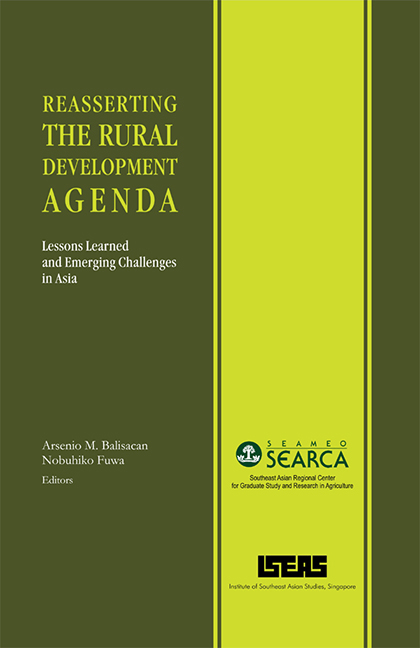Book contents
- Frontmatter
- Contents
- Tables
- Figures
- Preface
- Contributors
- 1 Challenges and Policy Options for Agricultural Development – Overview and Synthesis
- 2 The Economics of Agricultural Development: What Have We Learned?
- 3 The Role of Social Structures and Norms in Agricultural Development: Africa and East Asian Communities Compared
- 4 Food Security in a Globalised Setting
- 5 Poverty and Vulnerability
- 6 Asian Agricultural Development: From the Green Revolution to the Gene Revolution
- 7 Dryland Agriculture in Asia: Ideas, Paradigms, and Policies
- 8 Establishing Efficient Use of Water Resources in Asia
- 9 Improving the Delivery of Extension Services to Rural People: New Perspectives
- 10 Land Tenure and Forest Resource Management in Asia
- 11 Globalisation and the Poverty-Environment Link in Asian Agriculture
- 12 The Supermarket Revolution with Asian Characteristics
- Index
12 - The Supermarket Revolution with Asian Characteristics
Published online by Cambridge University Press: 21 October 2015
- Frontmatter
- Contents
- Tables
- Figures
- Preface
- Contributors
- 1 Challenges and Policy Options for Agricultural Development – Overview and Synthesis
- 2 The Economics of Agricultural Development: What Have We Learned?
- 3 The Role of Social Structures and Norms in Agricultural Development: Africa and East Asian Communities Compared
- 4 Food Security in a Globalised Setting
- 5 Poverty and Vulnerability
- 6 Asian Agricultural Development: From the Green Revolution to the Gene Revolution
- 7 Dryland Agriculture in Asia: Ideas, Paradigms, and Policies
- 8 Establishing Efficient Use of Water Resources in Asia
- 9 Improving the Delivery of Extension Services to Rural People: New Perspectives
- 10 Land Tenure and Forest Resource Management in Asia
- 11 Globalisation and the Poverty-Environment Link in Asian Agriculture
- 12 The Supermarket Revolution with Asian Characteristics
- Index
Summary
Introduction
The world has been fascinated by the extremely rapid growth of trade and industrialisation in the Asian region over the past several decades. The demand and supply, i.e., the imports and exports, of this vast region affect global food markets. Much attention has been paid to the domestic food markets of the region, in particular the supply-side transformation wrought in the 1960s/1970s by the Green Revolution.
However, a new wave of profound transformation has been occurring in the 1990s/2000s, this time from the demand side, sparked by a relatively sudden and massive evolution of the retail sector. A supermarket1 revolution has swept much of the emerging-market areas of the Asian-Pacific region – – i.e., East Asia (excluding Japan) and Southeast Asia — and is brewing now in South Asia. Supermarkets have been traditionally viewed by development economists, policymakers, and practitioners as the rich world's place to shop. But supermarkets have ceased to be the exclusive domain of rich consumers in the capital cities of Asia. The rapid rise of supermarkets in Asia (and elsewhere in the developing world) in the past five to ten years has transformed food markets — at different rates and depths across regions and countries.
This retail transformation is, in turn, transforming other segments of food markets such as the wholesale, processing, and farming sectors. The changes are “privatizing” the food system, “integrating” a formerly highly decentralised and fragmented market, and “globalizing” and “regionalising” the food system of Asia, thereby bringing competition from national, regional, and global actors into all segments of the food system. Such profound change in domestic markets has development and trade implications.
This chapter treats these changes and presents emerging evidence and hypotheses concerning their implications. We focus, in particular, on one aspect of the food industry transformation in Asia — the rise of supermarkets and its implications for small farmer development. We start by discussing the patterns in the spread of supermarkets in Asia. We then present the changes in the procurement systems of supermarket chains and their relation to the overall transformation of all the three segments of the food industry. We also explore the market-condition implications of the change in the downstream portion of the food system for small farmers. We conclude with policy and research implications.
- Type
- Chapter
- Information
- Reasserting the Rural Development AgendaLessons Learned and Emerging Challenges in Asia, pp. 369 - 394Publisher: ISEAS–Yusof Ishak InstitutePrint publication year: 2007



